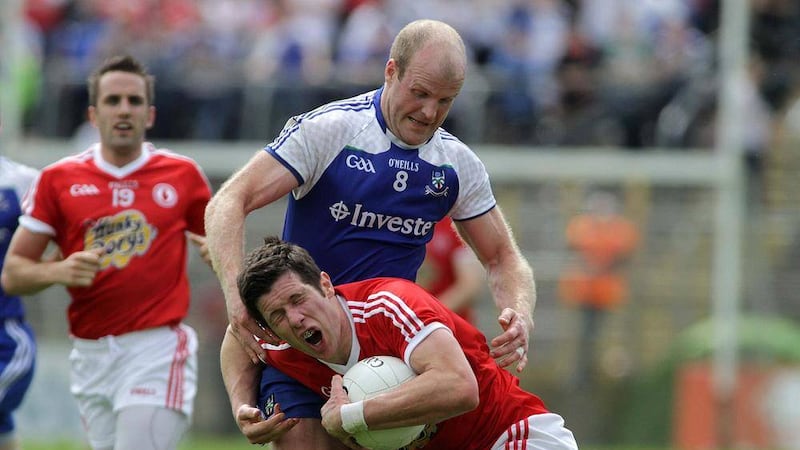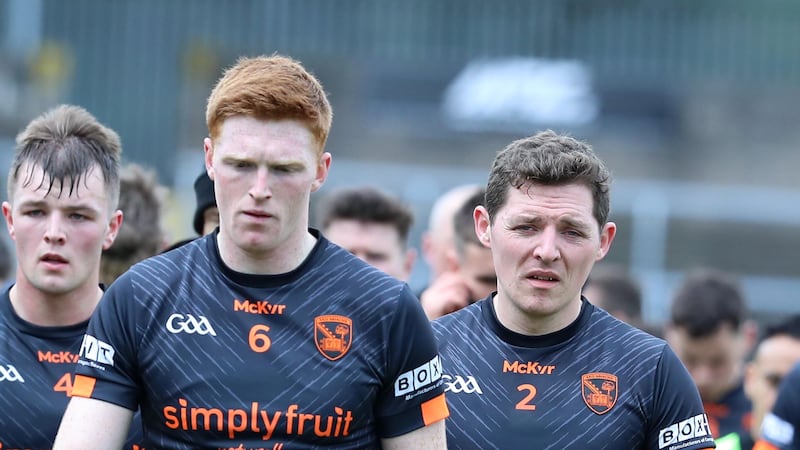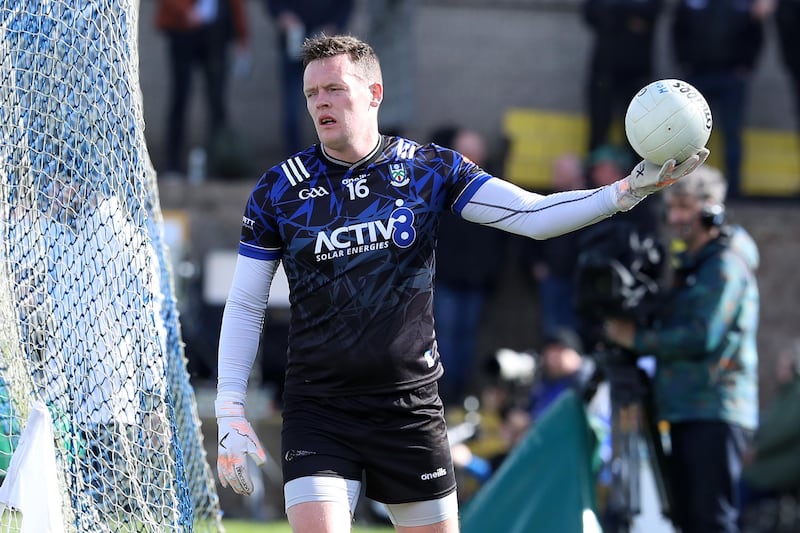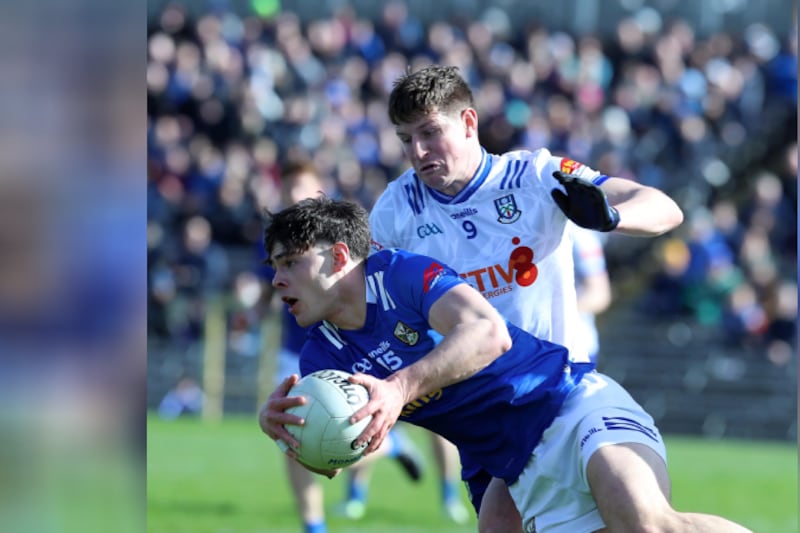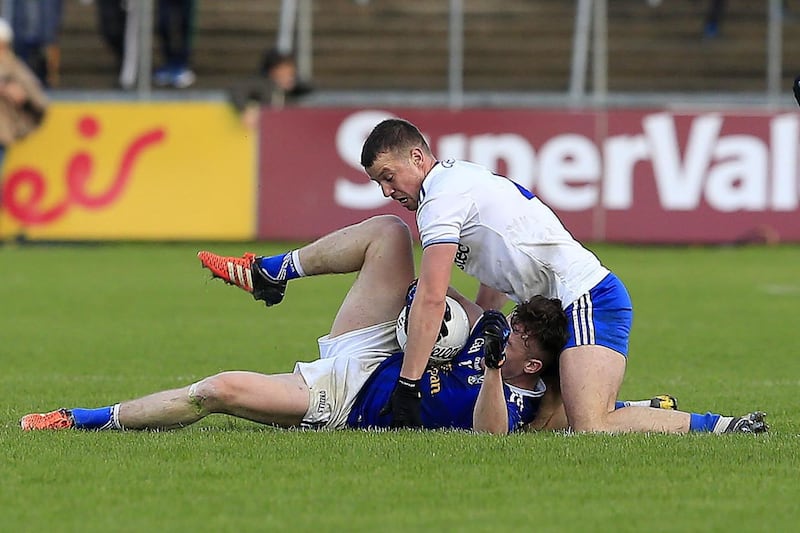ON OUR honeymoon, we met a couple from Kerry. The husband impressed me immediately by identifying my origins after only hearing me speak a few words. `You’re from south Tyrone or north Monaghan,’ he declared. Astounded almost to speechlessness, I managed to confirm the former.
I could hardly have told him if he was from Cork or Kerry (and I’d have felt proud of narrowing him down to those two counties), never mind Tralee.
It’s not just the accents that are hard to separate between Monaghan and Tyrone.
There’s only been a cumulative three points between the two sides over their last three Championship meetings, with Tyrone winning two by two points and Monaghan edging the last by the minimum margin. Those matches have recent relevance too, coming in 2011, 2013, and last year.
Another close encounter will be welcomed, especially after the one-sided games that took place at Croke Park over the weekend. The average winning margin in the two round 4B qualifiers and the first two quarter-finals was 13 points, with Tyrone’s clash with Sligo the tightest, and the Red Hands always had the Connacht Finalists at arm’s length during their seven-point success.
Tyrone would snap your arm off now though if you guaranteed them a one-point victory this Saturday afternoon.
Although the border, and the geographical location of bigger clubs, means Monaghan-Tyrone may not be a major rivalry off the pitch, it has become one on them.
Before the Qualifier era, these two counties had only met three times in the previous quarter-century, albeit the most recent being the 1988 Ulster SFC final, which Monaghan won by two points, 1-10 to 0-11.
Tyrone people, though, and Noel McGinn in particular, still talk about the late penalty claims that he had turned down. To be fair, even the Cork County Board couldn’t have complained if a spot kick had been awarded in the circumstances.
They were the two strongest Ulster teams in the mid- to late Eighties, with Monaghan winning the National Football League in 1985, the only Ulster winner apart from Down since 1948.
Yet although that controversial victory in ’88 had followed a pattern of the counties taking turn about to win – in the days when Castleblayney and Dungannon hosted Ulster SFC matches – Monaghan went more than a quarter-century for another Championship win over their neighbours to the north, that only coming in last year’s provincial quarter-final.
Saturday’s match is likely to be a far cry from the game that renewed the counties’ Championship rivalry, apart from the fact that Croke Park was also the venue, almost exactly a decade ago. Tyrone cruised through that round four qualifier, winning by 10 points en route to their second All-Ireland.
Two years later it was much tighter in the Ulster Final, but Mickey Harte’s men won again, by two points. Monaghan had their own `McGinn moment’ when their burly defender Vinny Corey went to full-forward late on and almost grabbed a last-gasp equalising goal, but his shot went over the bar, not under it.
The sense of Tyrone being Monaghan’s nemesis continued in the 2010 Ulster Final, with another 10-point success for the Red Hands, followed by a two-point win at Healy Park in the provincial quarter-final the next year.
There’s no doubt that Monaghan used the hurt of those defeats in provincial deciders to drive them on to triumph two years ago, ending their 25-year wait for the Anglo-Celt Cup.
Yet once again they could not get past Tyrone, losing the subsequent All-Ireland quarter-final by, yep, two points, in a match best-remembered for Sean Cavanagh’s rugby tackle on Conor McManus two-thirds of the way through the match. The outcry over that incident effectively led to the introduction of the black card.
Monaghan had enjoyed some success against Tyrone, notably beating them in the Dr McKenna Cup Final of 2003, Harte’s first senior season in charge.
However, while Tyrone went on to bigger and better things, Monaghan spent a few years in the doldrums, before Seamus McEnaney launched their revival. The `Banty’ got Monaghan up to Division One for the 2010 campaign, and they edged a one-point win over Tyrone in Inniskeen.
Championship, though, remained another matter, with those further defeats in 2010, 2011, and 2013, until Monaghan finally cast the Red Hand gorilla off their backs last year, although there were understandable signs of nerves as they hung on for the victory.
I recall following Tyrone’s cavalcade northwards with `Sam’ in 2003 and the warm welcome that Monaghan people offered them on their return into the province of Ulster.
Monaghan have moved on from those days though. They are desperate to win a first All-Ireland themselves; Ulster is no longer enough for them.
If anyone can lead them to that glory it’s Malachy O’Rourke, a near neighbour of Harte and a fellow Errigal Ciaran clubman.
He’s already got the better of Tyrone this year, winning their Division One meeting in Omagh by seven points. Tyrone were very poor in the second half, but the emphasis should have been on Monaghan, who were terrific.
That win set the tone for their League, indeed their season: Monaghan went on to achieve rare away wins in Donegal and Kerry, and they only succumbed to a one-point defeat by Dublin in the semi-final at Croke Park.
That defeat also changed Tyrone’s year. The Red Hands adopted a much more defensive approach for their next outing, away to Mayo, and have continued to get many bodies behind the ball.
Saturday will be intense. The prize for Monaghan or Tyrone? A semi-final against Kerry; maybe I’ll see Billy from Tralee at Croke Park for another hard-fought match.
* Last Sunday’s two quarter-finals may have been entertaining in a way (unless you happen to support Kildare) but they could hardly be called competitive.
Never mind them being the two highest-scoring quarter-finals ever (50 and 47 ‘points’), with Kerry and Dublin racking up the highest (37, 7-16) and third highest (29, 2-23) team tallies respectively.
Perhaps the most startling statistic was 0 – that being the number of cards shown by the referees in both games.
There was some discussion about the disparity in the number of frees awarded to Fermanagh compared to Dublin, with the Ernemen receiving 21 or 22 and the Dubs just four.
Sure, part of that may have been down to sympathetic refereeing, but more likely it was because Fermanagh players struggled to lay a hand on their opponents due to their speed and movement, while Dublin defenders were getting tight, trying not to lose a starting slot in the semi-final by a poor marking performance.
I could have assessed the referee’s performance but, having been at the match, I deleted the recording; only Fermanagh folk would want to watch that again.
